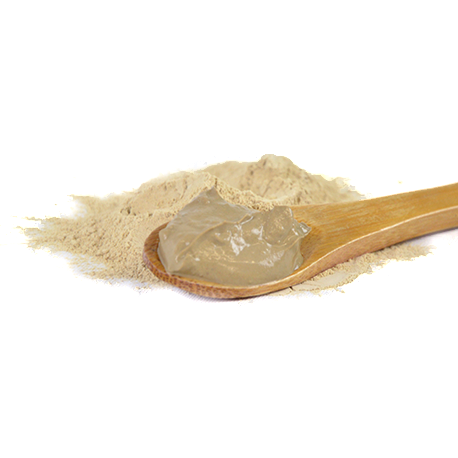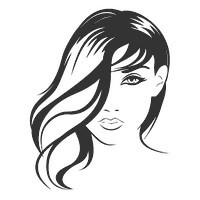La Compagnie des Sens and its teams do not encourage self-medication. The information and advice provided comes from a reference bibliographic database (books, scientific publications, etc.). They are given for information purposes, or to suggest avenues for reflection: they should in no case replace a diagnosis, consultation or medical follow-up, and cannot engage the liability of the Compagnie des Sens.

Yellow illite, kaolin type clay is not that different from green illite, kaolin, montmorillonite clay. Only this last mineral composition differentiates them and this is visible in their color in particular. Just like green clay, yellow clay has absorbent, adsorbent properties and allows gentle cleansing of the skin, scalp and hair. It will be suitable for oily to combination skin but also for blemished skin for which exfoliation will sometimes be required. Face mask, scrub, hair mask, yellow clay is ideal for cosmetic care. INCI name: Illite and Kaolin. Origin: France.
This article was updated on 16/02/2024Methods of using clays
In cosmetic care
- Mask for skin or hair;
- Exfoliating treatment;
- Mudbath.
In therapeutic care
- Poultice;
- Clay water;
- Clay water.
For combination to oily skin
The yellow clay of Velay has absorbent and adsorbent capacities useful for regulating the quantity of sebum excreted through the skin. Yellow clay can be used in the same way as green clay to regulate the condition of the skin and restore perfectly balanced skin.
-
Use as a mask: make a homogeneous clay paste with a little water, then apply as a mask to the face. Leave on for 10 to 15 minutes, then rinse with clean water. This mask should be done weekly.
-
Complementary essential and vegetable oils: for greater effectiveness, it is possible to add a few drops of Jojoba vegetable oil and 2-3 drops of Tea Tree essential oil to the clay paste.
In case of blemished or blotchy skin
The yellow clay of Velay has absorbent, cleansing and regenerating properties which can be useful in cases of stained or blotchy skin. A exfoliation and gentle scrubs of the skin will be ideal for promoting cell regeneration and reducing spots.
-
Use as a mask: make a homogeneous clay paste with a little water, then apply as a mask to the affected areas. Leave on for 10 to 15 minutes, then rinse with clean water.
-
Complementary essential and vegetable oils: for greater effectiveness, it is possible to add a few drops of Rosehip vegetable oil and 2-3 drops of Rosat Geranium essential oil to the clay paste.
In case of wrinkles
It turns out that scientific studies show the effect of Illite, particularly on collagen synthesis. This protein enters into the composition of the skin in particular and ensures theelasticity of the latter and the regeneration of skin cells. Thus, the use of yellow clay as a weekly mask seems beneficial to combat the appearance of wrinkles and promote good skin elasticity.
Use as a mask: make a homogeneous clay paste with a little water, then apply as a mask to the affected areas. Leave on for approximately 15 minutes, then rinse with clean water.
Essential, vegetable oils and complementary hydrosols: for greater effectiveness, it is possible to add a few drops of Rosehip or Apricot Kernel vegetable oil and 2-3 drops of Rosat Geranium essential oil to the clay paste. Instead of water, it is also possible to use a Lavender or Italian Helichrysum hydrosol for example.
For all hair types
-
Use as a mask: make a clay paste to distribute over the entire damp scalp, then massage like shampoo. Leave on for 15 minutes and rinse with clean water.
-
Essential oil and complementary hydrosols: for greater effectiveness, you can add 2 drops of Cade essential oil and replace the water in your paste with an Atlas Cedar or Green Tea hydrosol.
For makeup
Use in powder coating: the clay can be applied to the face and cheeks to give a tanned complexion to the skin.
In case of bruises and pain
-
Use as a poultice: make a homogeneous clay paste (water + clay) to distribute in a thick poultice over the area in question. Leave on for 1 hour before rinsing. Repeat several times a day for several days.
-
Complementary essential oils: for greater effectiveness, depending on the problem encountered, it is possible to add a few drops of essential oil of Italian Helichrysum, Fragrant Wintergreen or Peppermint to the clay paste.
Main properties of Yellow Clay
-
Absorbent, cleansing, purifying: Illite yellow clay is a particularly absorbent clay due to its structure. It thus acts as a skin cleanser. It fixes a large number of impurities, bacteria and other parasites on the skin and hair. It is also useful for eliminating excess sebum and promoting skin cell regeneration.
-
Colorant: Its natural coloring gives it interesting coloring properties. It can be used as makeup on the cheeks for a healthy glow.
-
Exfoliating: The powdery appearance of the clay and its granulometry give it cleansing and exfoliating properties ideal for gentle skin scrubs. This exfoliating property is also interesting for promoting cell renewal and therefore slowing down cell aging and the appearance of spots.
-
For oily to combination skin: illite yellow clay is recognized for its cleansing and particularly absorbent properties allowing it to regulate excess sebum. It is therefore suitable for oily to combination skin.
-
For all skin types : illite yellow clay has the advantage of being suitable for all skin types.
-
For all hair types: illite yellow clay is suitable for all hair types. As a mask, it will cleanse and absorb excess sebum and impurities.
Characteristics and composition

Cosmetic features
- Skin type: all skin types, but special mention for combination to oily skin, blemished skin
- Hair type: all hair types

Mineralogical characteristics
- Inci name: illite, kaolin
- Country of origin: France

Physical characteristics
- Humidity: <8%
- Particle size: 90% < 77 μm / 100% < 100 μm
- pH: 8 to 9
- CEC: 20 meq/100 g

Organoleptic characteristics
- Appearance: fine and homogeneous powder
- Color: beige yellow
- Odor: odorless

Composition
- Illite: 75% ± 5
- Kaolin: 25% ± 3
- Quartz: none
- Pb < 20 ppm
- Ace < 20 ppm
- CD < 0.2 ppm
- Hg < 0.01 ppm
Precautions for use
-
Ingestion, people subject to constipation should not use clays. Their use is also contraindicated in people with a digestive hernia, in cases of high blood pressure, a history of intestinal obstruction or even nausea. Be careful, ingesting clay can counteract the effects of drug treatments. It is important to drink enough water during a clay treatment.
-
Dermal, clay should not be reused, be sure to throw away clay that has already been used. Avoid letting it dry a clay. Rinse with clean, cold or lukewarm water. On the hairiest parts of the body, for maximum comfort, place a compress between the clay poultice and the skin.
-
When handling, be careful of drafts as the clay is powdery. It should not be inhaled. In case of excessive inhalation, it is important to get fresh air. In case of contact with eyes or mucous membranes, rinse with plenty of water. Be careful, when handling clays, do not use metal utensils, they will lose a large part of their effectiveness.
-
Pregnant and breastfeeding women and young children should seek medical advice before use.
-
Store preferably in a dry place, away from light and heat.
Was this article helpful to you?
Average grade: 4.7 ( 104 votes)
Bibliography
Publication: Carretero, M.I. (2002). Clay minerals and their beneficial effects upon human health. A review. Applied Clay Science, 21(3-4), 155-163.
Publication: Hernot, F. (2006). Clay, its use in the pharmacy. http://dune.univ-angers.fr/fichiers/20073109/2016PPHA5426/fichier/5426F.pdf
Work : Dextreit, R. (2010). The clay that heals: a guide to natural medicine. Escalquens, France: Living in harmony.
Work : Baudet, C. (2012). In shape thanks to clay! : Natural health and well-being. Mens, France: Terre Vivante Editions.
Website : https://www.rglayduvelay.com/fr/
Related articles
GUIDE The benefits of Yellow Clay for hair
GUIDE How to use Yellow Clay against acne?


